
Unique Animal Adaptations Poison Dart Frogs (Hardcover)
Adaptations are behaviors or characteristics a plant or animal has that makes it better able to live in a certain place or situation. Over time, frogs have adapted their eyes, legs, and skin to.
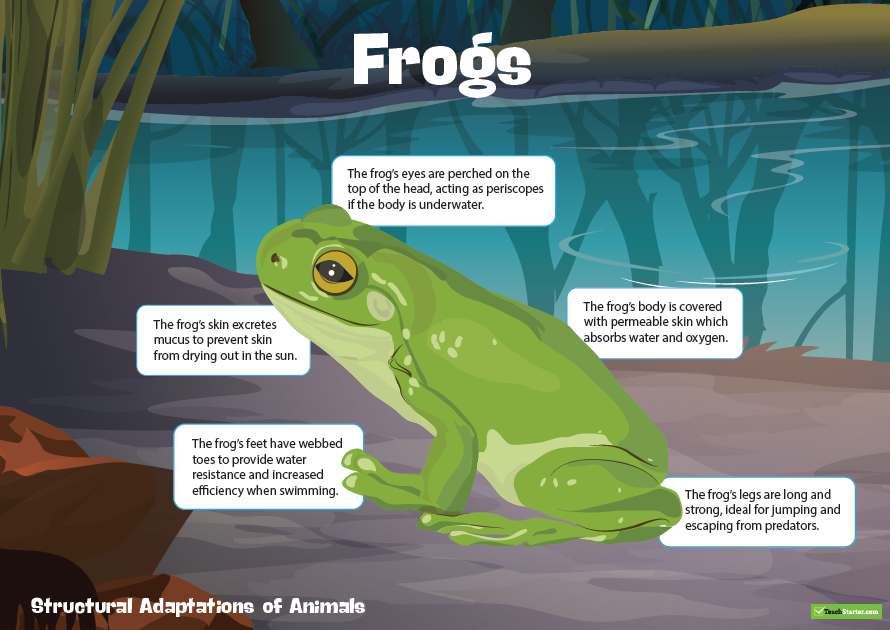
Biological Sciences to Room 9's Fantastic Fives website
Adaptation refers to the process of organisms changing their physical or behavioral characteristics over time to better suit their environment. Frogs have evolved a range of adaptations that enable them to survive and thrive in a variety of habitats. Table of Contents Physical Adaptations: Body, Legs, Skin

Cryobiology Frozen Wood Frogs and Adaptations for Survival Frog, Frog and toad, Poison dart frogs
The wonder of different frogs moving around their habitat. We see them move and interact with their surroundings, climbing trees, jumping in slow motion and feeding. Suitable for Key Stage 1, Key.

Poison Dart Frog Sitting on a Leaf This image appears with… Flickr
Elsewhere, habitat loss is a significant cause of frog population decline, as are pollutants, climate change, increased UVB radiation, and the introduction of non-native predators and competitors. A Canadian study conducted in 2006 suggested heavy traffic in their environment was a larger threat to frog populations than was habitat loss.

Adaptations Of A Frog Behavioral, Structural & Physiological Zooologist
Frog adaptations such as a small waist, no neck and a broad, flat skull make his body streamlined for swimming. The frog's skin is thin, which allows for air to pass through, in effect allowing him to breathe through his skin. Powerful hind legs and feet allow the frog to jump long distances.
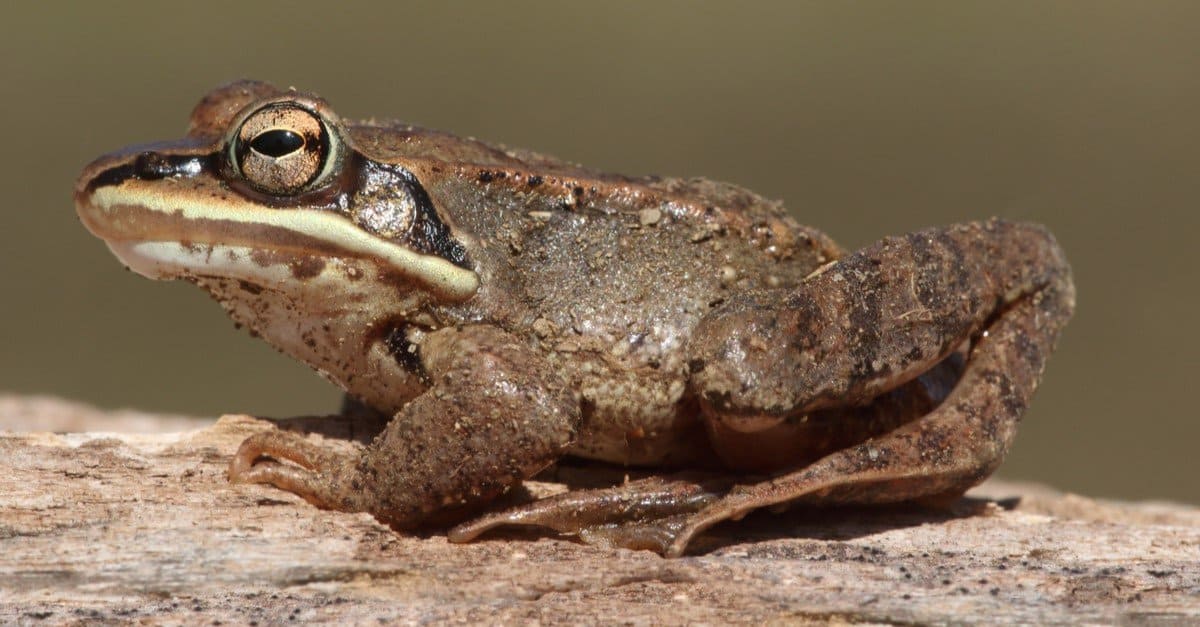
The Top 8 Craziest Animal Adaptations IMP WORLD
Frogs are especially adapted for the places they live in and their colouring is often dependent on their habitat. Many different species that live in the same types of habitats, have similar colourings that helps them to hide from potential predators. Some have even adapted to look like bird poo!

top ten frog adaptations
The Wood Frog's adaptations to its environment are truly remarkable. From its ability to withstand freezing temperatures to its intricate mating rituals, the Wood Frog has evolved unique strategies for survival. By studying and appreciating these amazing adaptations, we can gain a deeper understanding of the intricacies of the natural world.
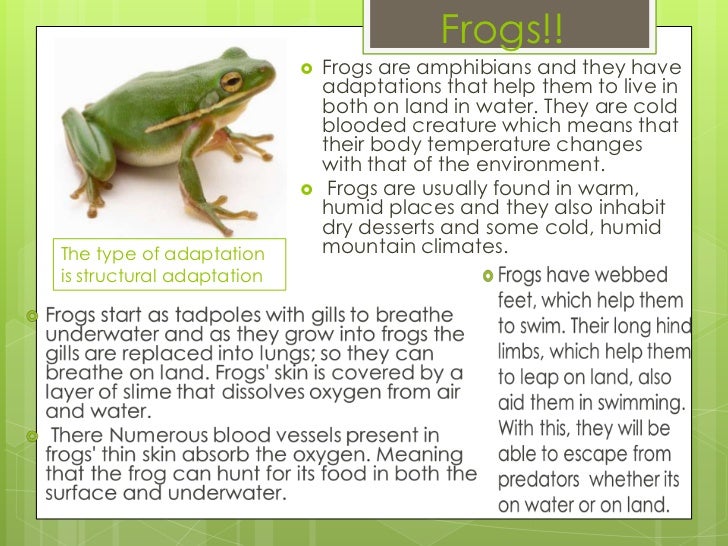
Adaptations powerpointscience
Physical Adaptations of Arboreal Frogs Camouflage to Blend in Limb Structure to Aid Climbing & Leaping Respiratory Adaptations for Humid Environments Arboreal Frogs Overview Arboreal is a word used to describe an animal that lives in the trees. In the case of frogs, there are more than 800 arboreal species which belong to several families.

10 Frog Adaptations (Evolutionary Secrets!) Fauna Facts
Adaptations for Life on Land. Frogs have several adaptations that help them survive on land. One of their most important adaptations is their ability to regulate their body temperature through behavior. They bask in the sun to warm up and seek shade to cool down. Frogs also have a special type of skin that can absorb oxygen, allowing them to.

Evolution Project by Gabe Bruner
Frog Behavioral Adaptations. Frogs have evolved numerous behavioral adaptations that enhance their survival and reproduction in diverse environments. For instance, many species exhibit nocturnal behavior, becoming more active during the night to avoid predators and reduce competition for resources.
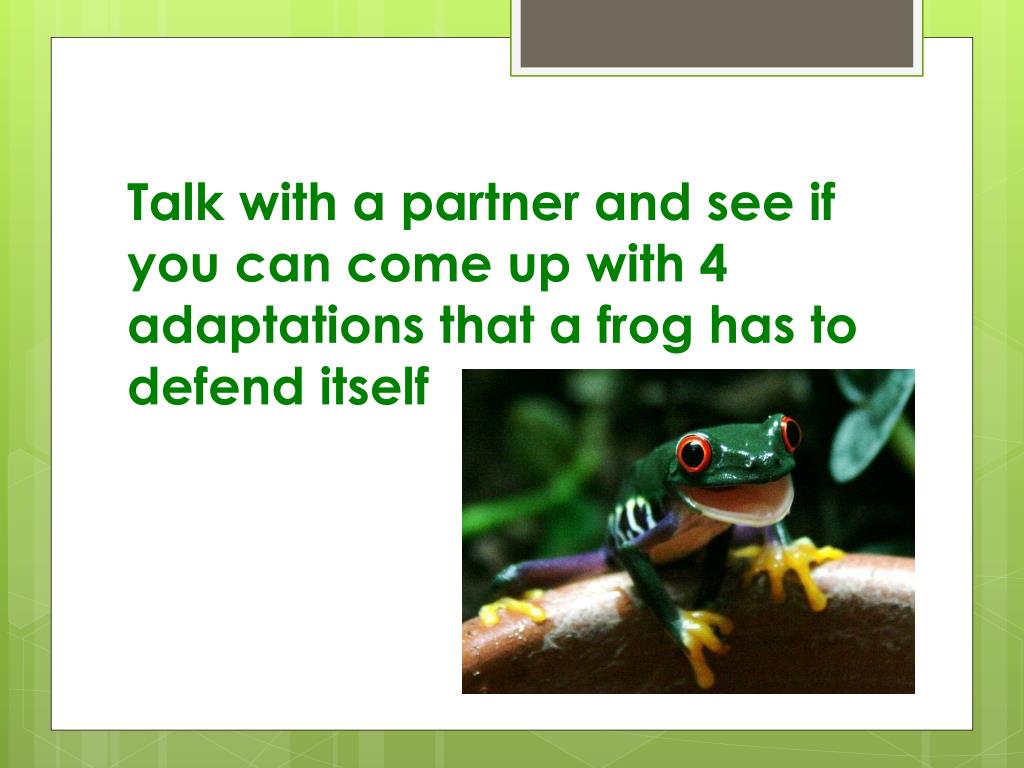
PPT Amphibian ADAPTATIONS PowerPoint Presentation, free download ID2348796
Amphibians live both on land and in water. Other amphibians include salamander, newt, and caecilian. What's the difference between frogs and toads? There isn't a difference, the word "frog".

PPT FLORIDA TREE FROGS AND THEIR ADAPTATIONS PowerPoint Presentation ID144821
Some of the red-eyed tree frog adaptations include their brightly colored eyes and skin, their sticky toes, and their third eyelid. There is no doubt that these fascinating frogs are fit for the environment. To have a look at our Red-Eyed Tree Frog Guide just click on the image below and have a happy and healthy pet.

Animal adaptations, Frog, Amphibians
Frog Adaptations 1. Breathable Skin The frog's skin can process oxygen from water, which gives them the ability to breathe while swimming and while submerged. The downside is that the frog's skin has to be moist all the time. Frogs and toads have different skin types. Some skins are smooth, and some have warts.

Frog Adaptations Lesson for Kids Video & Lesson Transcript
Amphibians, like the paddy frog (Fejervarya multistriata), have played a critical role in the transition from water to land. Hibernation is a vital survival adaptation in cold environments with limited food resources. We decoded the paddy frog genome to reveal the molecular adaptations linked to hibernation in ectotherms. The genome contained 13 chromosomes, with a significant proportion of.

PPT Poison Dart Frogs PowerPoint Presentation, free download ID2158929
These adaptations include hibernation, vocalizations, camouflage, mating behavior, burrowing, jumping and leaping, and basking in the sun. Each of these adaptations is unique and helps frogs to survive in a variety of different habitats. Hibernation:
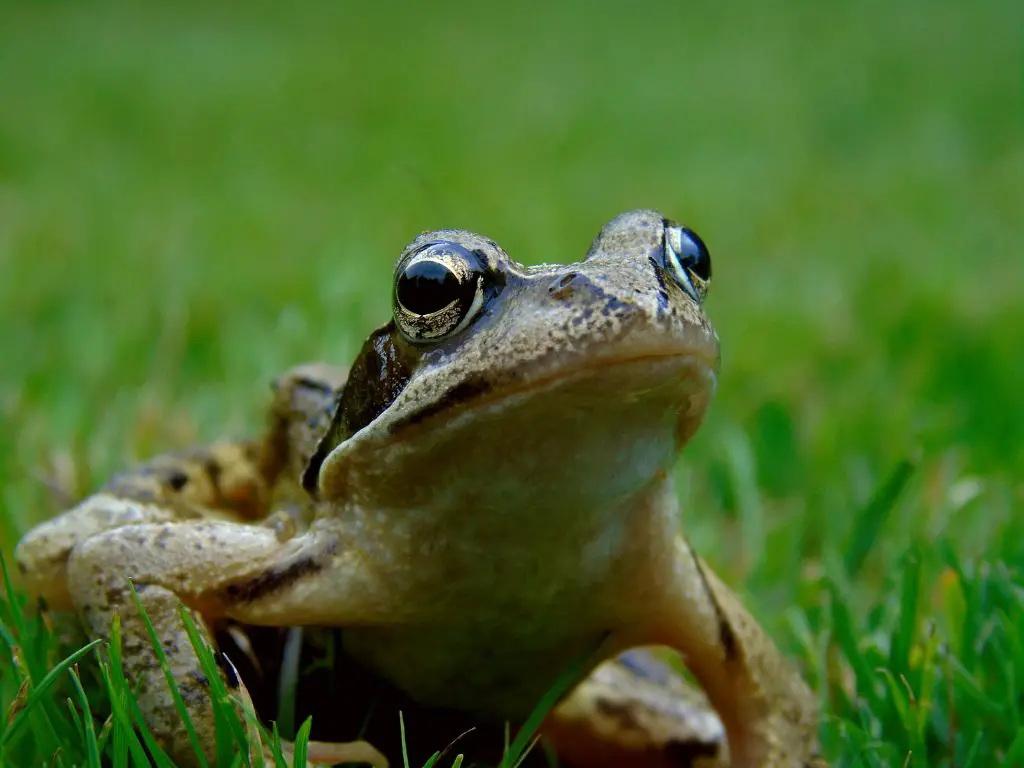
The Life Cycle of a Frog A Fascinating Journey from Egg to Adult Zooologist
Coloration The skin toxins of most frogs do not provide security from predators; in fact, frogs are a basic food for many snakes, birds, and mammals. Edible frogs and toads rely on modifications of shape, skin texture, and colour, supplemented by behaviour, to escape detection. These modifications may reach remarkable extremes.